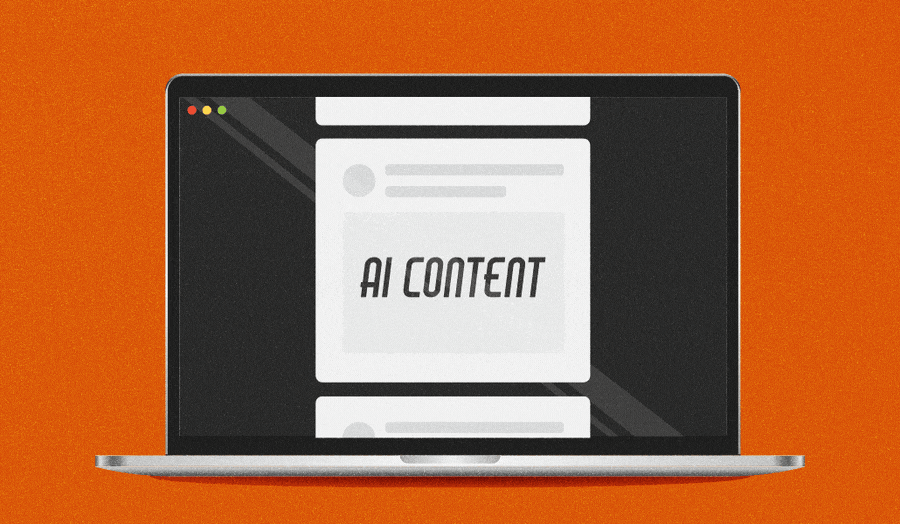This Media Briefing covers the latest in media trends for Digiday+ members and is distributed over email every Thursday at 10 a.m. ET. More from the series →
This week’s Media Briefing looks at how publishers including Financial Times, Immediate Media and Reuters adopting AI tools to augment their journalism.
AI-assisted newsrooms
AI-assisted newsrooms are having a moment, again.
Once dismissed as error-prone novelties — or outright threats to newsroom jobs — publishers are now actively embracing AI-powered tools to support reporters in everything from transcription and translation to background research, SEO optimization, press release summarization, headline selection, and even article drafting. As news organizations face relentless pressure to do more with less, this quiet adoption marks a significant shift: AI isn’t replacing journalists (yet) — it’s quietly becoming their sidekick.
“We really want to empower our journalists and make it that they own their future — that the future is not happening to them,” Reuters’ head of AI strategy Jane Barrett told Digiday. The news organization, which has rigorously trained its 26,000 global journalists in generative AI use, rolled out a suite of AI video production tools to its publisher and broadcaster clients this April, after months of testing them in its newsrooms.
Over the last month Reuters, The Independent, the Washington Post, and Newsquest have made noise about how they’re further adjusting their strategies to evolve with the rise of generative AI in a competitive news environment. Efforts include the addition of AI-assisted reporters in their newsrooms, updates to AI-powered content management systems, new proprietary AI tools, and entirely AI-produced news products like The Independent’s Bulletin.
It’s one thing for publishers to experiment with AI tools in small newsroom trials, but scaling them across entire editorial operations is a much bigger lift — requiring new workflows, staff training and cultural shifts. Still, that leap is increasingly happening as publishers chase efficiency and personalization with an eye to future-proofing their journalism, according to seven publishers Digiday spoke to for this article.
The Financial Times is using computational techniques to identify critical stories that might otherwise go untold. Last week it used AI to categorize 10,800 complaints from Tesla customers which resulted in its reporters writing a story on how Elon Musk’s Department of Government Efficiency mass firings disproportionately hit staff assessing self-driving risks. It used that same technique for the first time last year when it analyzed 36,000 images using a machine-learning image recognition tool to find missing Ukrainian children on Russian adoption sites.
Like The Independent’s Bulletin service, the FT is also using AI to help create secondary content: short summaries of articles that are reviewed by editors before publication. It plans to automate this test and extend it to around 5% of articles, then monitor the effect on reader engagement.
“We won’t allow AI to compromise the integrity of our journalism, which will be reported, written and created by our journalists, but our newsroom is also innovating and experimenting,” said Matthew Garrahan, the FT’s head of digital platforms.
Meanwhile, agentic AI — though still nascent and more popular as a talking point among ad agencies and ad tech vendors — is gaining more traction among publishers with some experimenting with use cases, and others having already assimilated agentic AI into their workflows as an efficiency tool.
For now, publisher attention has focused largely on efficiency and productivity gains, but that’s changing to embrace how reporters can unlock new ways to do investigative journalism, according to Joanna Levesque, managing director of the FT’s consulting arm FT Strategies. “I do think there is a maturity across publishers coming,” she said.
The thinking is that publishers can’t afford to keep AI at arm’s distance. Referral traffic has long been a volatile source of audience for publishers — but the rise of AI platforms and answer engines, which increasingly serve up content without prompting users to click through, threatens to make that problem even worse.
“In this new AI world, the distribution channels are changing, just as they did with social media, and so we need to be really thinking about, how we have our news ready to get into these new distribution channels and to find new audiences and prove that value of the usefulness and the relevance of fact-based unbiased news,” said Barrett.
Handing off the grunt work to AI – the productivity promise for publishers
The conversation is shifting from fears that AI will replace journalists to a more measured acceptance that it will reshape editorial roles — ideally freeing reporters to focus on deeper investigative work. That kind of high-value journalism is becoming even more critical as publishers try to create content compelling enough to drive clicks from AI answer engines, which, unlike traditional search, aren’t built to encourage that behavior.
Reuters journalists transcribed almost 7,000 minutes of content in 70 languages last month across the newsroom using its AI video tool, saving dozens of hours of work, according to a Reuters spokesperson.
“It’s empowering our journalists to work faster, not to have to be working horrible late nights because something suddenly happens in your language,” said Barrett.
Use of the generative AI tools has helped lower the stress levels in the Reuters newsroom, Barrett said. She admitted that the role of junior reporters now is markedly different from a few years ago, but that it’s not hindering their development, just reshaping the requirements for those roles. “There are some jobs that will change,” conceded Barrett, “but we’re committed to helping people through that change, and we’re also committed to reinvesting in news gathering because that’s what AI can’t do — it can’t be human.”
For others though, there will likely be cuts. One publisher executive who agreed to speak anonymously said they’re expecting to reduce headcount by a few people a year as a result of efficiency gains on AI tools. Although, that same exec said this isn’t an overall concern for its journalism with reporters freed up to spend more time on investigative journalism.
Barrett claims that AI is taking on the grunt work of many roles, which traditionally have involved mining and filtering thousands of press releases a day and similar volumes of video footage, to find the right facts and source material for bulletins, summaries, follow-up stories and video content.
“I know from personal experience that sitting there at 7 a.m. when all the company news starts flooding out at you is really stressful, like super high adrenaline,” said Barrett.
Reuters rolled out its first set of generative AI tools last April, and unveiled a new batch of video AI tools two weeks ago to its publishers and broadcaster clients. The tools are designed to shave time off video production workflows. Barrett is bullish on never using AI for image generation.
The AI assistant within the Reuters CMS is a chatGPT plugin, where editorial staff can ask it questions like how to shorten an article if it’s too long or whether any fresh angles have been missed in the story, or check the angle is timely enough.
While there is a marked change in how much publishers are investing in AI in their own staff and product output, the journey will unlikely be smooth for a while. Bloomberg reportedly had a rocky start with its AI summaries, having to redact certain ones based on details about Trump tariffs that the AI got wrong, like incorrect figures and incorrect attribution.
But if anything, this kind of snafu simply serves to underline the united front publishers have: that AI can be valuable in assisting but never replacing human journalists.
Immediate Media, home to magazine titles including Good Food and Top Gear, has developed a “first draft” tool for its writers that connects GPT with the publisher’s content archives to help create first drafts of articles, which are then rigorously checked by its journalists. This isn’t intended to speed up the volume of articles it can create, but means writers can now have the AI mine the millions of articles created by the magazine brands and do things that would have been previously highly time-intensive like establishing a skeleton timeline or ensure angles are new, across titles including Godo Food, according to director of digital content strategy at Immediate Media Roxanne Fisher.
Those surfaced articles can then be contextually fed into new articles. “This gives you a first draft and can save you 20% to 30% of your time in content creation,” said Fisher. “I don’t want to read an email that’s written in AI, and users don’t want to read a piece of content that’s obviously written by AI,” she added.
Naturally, there is still reason to proceed cautiously. But after years of skepticism, newsrooms are no longer just dabbling with AI — they’re defining how it fits into their workflows. “We don’t want AI to be creating our content. We want it to be assisting in the content creation. Yes, it’s short-cutting that research process and that kind of frameworking and first drafting, but it won’t take away from the job that the editor and editorial team do,” added Fisher.
What we’ve heard
“What’s their [publishers with AI licensing deals] thinking around selling their soul for lunch money? The ones we see like $30 million, $75 million — it still doesn’t sound like much to me if you’re looking at potentially a new method of consumer interaction where nothing happens anymore on your own and operated domain. If that’s the compensation you get, that’s still lunch money.”
— An anonymous publishing executive on publisher licensing deals with AI platforms.
Numbers to know
- -33.1%: How much WARC forecasts that news publishers’ ad revenue will drop this year compared to 2019.
- $9 billion: The figure Netflix expects to hit in global advertising sales by 2023.
- 65: People working on People’s new TikTok-like app full time.
What we’ve covered
Content creators rethink their revenue mix amid recession fears
- Content creators are adjusting their monetization strategies to rely less on individual fans and more on advertisers, in anticipation of the expected recession.
Kick’s co-founder Ed Craven talks creator push and growing pains
- Streaming platform Kick is on a creator charm offensive as it looks to bump up its usage and compete with Twitch. But its acceptance of far-right voices on its platform is putting off a bunch of creators from joining.
Publishers eye potential Trump tariffs with guarded pragmatism
- Publishers are keeping a watchful eye on the outcome of the sustained macroeconomic shock that will likely arise as a direct result should they ever be established, which will raise consumer costs and reduce consumer confidence.
Google unveils swathe of new content creation tools
- Mondelez and Accenture are using Google Cloud’s content agents to create personalized text, images, and videos across global markets in hours instead of weeks.
What we’re reading
Gannett joins the throngs of companies scaling back open DEI efforts
Newspaper chain Gannett will no longer publish diversity and demographic data about its workforce and has removed all mentions of “diversity” from its corporate site, citing Trump’s executive order, according to Nieman Journalism Lab.
Associated Press reporters still barred from White House despite court order
Associated Press said one of its reporters and photographers were still barred from an Oval Office news conference on Monday, despite a federal court order the previous week ruling that the Trump administration must admit all press. The AP has fallen foul of Trump since it refused to rename the Gulf of Mexico.











